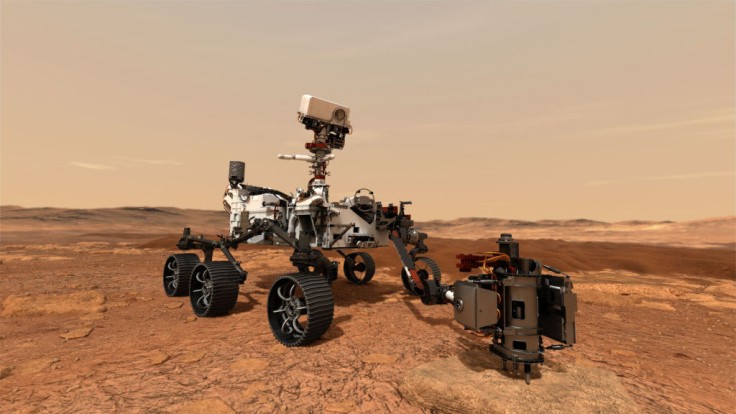
The Mars rover, Perseverance, recently made an exciting discovery. The robot found signs of massive floods on one of the Red Planet's craters despite its dried-out state.
Perseverance is also on the move to hunt for rock or sediment samples that may contain organic compounds and evidence of life that once existed there.
On July 30, 2020, NASA launched its land rover named "Perseverance" in space. The rover was designed to explore Mars' topography, assess its ancient habitability, seek signs of ancient life, gather rock and soil samples, and set an example for robotic technology aiding humans in space exploration.
As of this week, NASA confirmed Perseverance is making progress on some of its goals.
Mars Water Signs Discovered: Ancient and Massive Floods on the Red Planet
NASA reported details about the latest discovery in Jezero Crater and how Perseverance spotted signs of a now-dried lake in the area. First, Perseverance saw steep slopes, called escarpments or scarps, which are scientifically formed from sediments accumulating at the mouth of an ancient river.
Further research revealed late-stage flooding signs that carried the river rock and debris outside the crater and onto the high lands. Perseverance took samples of these discoveries.
Aside from the signs of water, Perseverance also discovered the lake-turned-crater changing depths. Its water levels rose and fell by tens of yards before eventually disappearing altogether. Science teams are still trying to determine the cause for this change.
NASA Mars Rover Pictures 2021: Kodiak Captured
The land rover also took the opportunity to capture Mars' prominent rock outcrop called Kodiak.
Before Perseverance, researchers could only capture Kodiak images from orbit. With Perseverance's advanced technology, researchers finally saw Kodiak's stratigraphy, or the position of its rock layers. Researchers were surprised by another discovery.
Nicolas Mangold, a Perseverance scientist from the Laboratoire de Planétologie et Géodynamique in Nantes, France, said, "This is the key observation that enables us to once and for all confirm the presence of a lake and river delta at Jezero," per NASA.
Kodiak's lower halves revealed scarps on its walls. This meant the area meandered waterways and might have been transformed by fast-moving flashfloods in ancient times.
For so long, people believed Mars was a dry planet incapable of supporting life. More recently, NASA concluded that Mars had a lot of water when it still retained a thick enough atmosphere to support it. More research will undoubtedly be made on the topic.
NASA Mars Rover Perseverance
The incredible discovery was made thanks to Perseverance's Mastcam-Z and Remote Micro-Imager (RMI). For reference, Mastcam-Z is an advanced camera system that can take 3D pictures and videos at high speed.
On the other hand, RMI is a part of Perseverance's SuperCam system. SuperCam is the camera, laser, and spectrometer packaged system equipped on Perseverance that lets it identify the chemical and mineral makeup of a target no more than 20 feet distance. It is also uniquely capable of clearing surface dust and maintaining its instruments.









